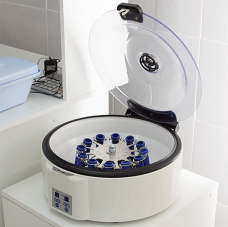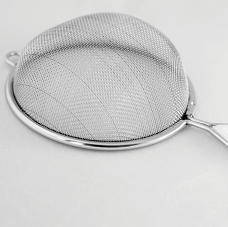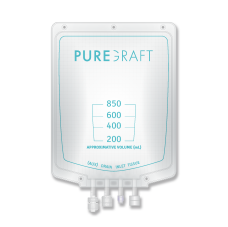Not All Fat Transfer is the Same
Fat transfer has been around for over a century, and along the way, several different techniques have been developed. All of them attempt to clean the fat tissue, removing unwanted components such as blood, oil, and fluid that accumulate from the liposuction process. When re-implanted in the body, they have been known to cause inflammation, lipid cysts, and resorption of the graft.
The most popular technique is centrifugation. Fat tissue is placed into multiple syringes and then spun down at high speeds to sediment the tissue and separate the different materials. The fluid and oils are then removed, leaving only the layer of fat cells.
Another technique involves a strainer. Fat tissue is poured into a strainer and the fluids and oils pass through. The tissue is then poured from the strainer into syringes and re-injected.
Both of these techniques are only marginally adequate at cleaning the tissue. While they do remove some contaminants, there is still a significant amount remaining. This causes inconsistent and unpredictable results.
Fat graft quality
-

Centrifuge
-

Straining
-

Puregraft
An improved technology called Puregraft, has been developed to improve the predictability of the procedure. Using a gentle and efficient filtration system, Puregraft cleans the fat tissue removing more than 97% of unwanted contaminants, leaving a highly purified graft. Removal of the blood and oil cells reduces inflammation and allows you to recovery much faster than before. Puregraft’s closed-system design also keeps your tissue contained in a sterile environment, reducing the risk of infection or other complications.
In a recent clinical study, fat grafts processed with centrifugation and Puregraft were compared to evaluate the effect of the processing technique on long-term results. 26 patients were assessed at an average of 17 months following their fat transfer procedure. The study reported that the average amount of fat that was still present was statistically higher in patients who received Puregraft fat compared to centrifuged fat.
Although fat transfer has been unpredictable historically, new technologies such as the Puregraft system are improving the reliability of the results, making fat transfer a safe, natural option for the first time.
Zhu M, Cohen SR, Hicok KC, Shanahan RK, Strem BM, Yu JC et al. Comparison of three different fat graft preparation methods: gravity separation, centrifugation, and simultaneous washing with filtration in a closed system. Plast Reconst Surg 2013; 131(4): 873-80.
Long-Term Volumetric Retention of Autologous Fat Grafting Processed With Closed-Membrane Filtration, David J. Gerth, Bethany King, Lesley Rabach, Robert A. Glasgold and Mark J. Glasgold. Aesthet Surg J. 2014 Sep;34(7):985-94.